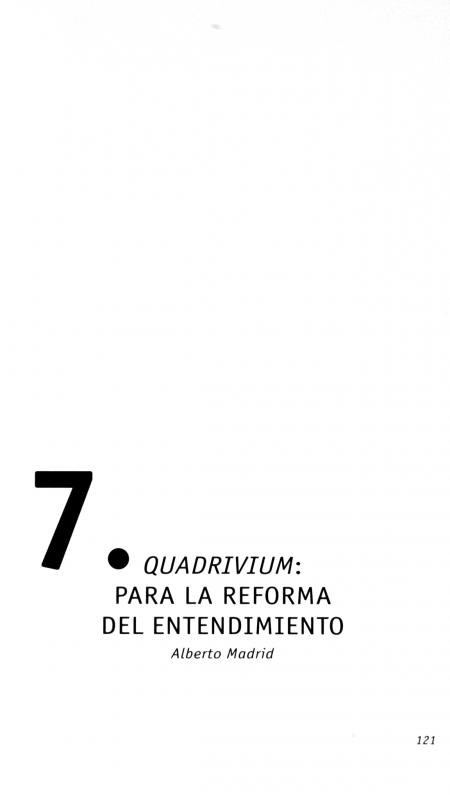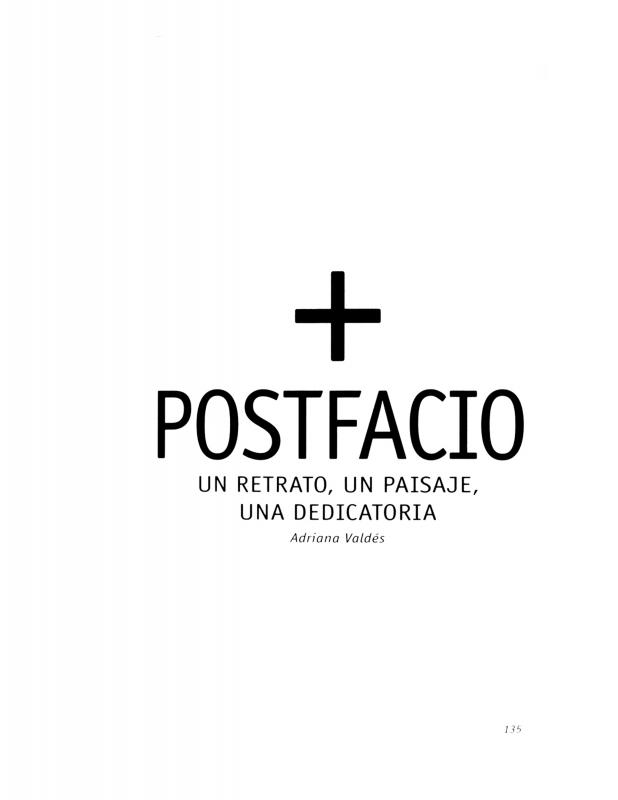“La persistencia programática de una década” [The Programmatic Persistence of a Decade] is an essay by the art critic and curator Justo Pastor Mellado (b. 1949) about the artwork produced by Gonzalo Díaz (b. 1947), written on the occasion of the latter’s exhibition at the Galería Gabriela Mistral in 1998. Quadrivium was a complex installation consisting of various components. The organizing structure of the installation was based on the fourteen Stations of the Cross, with a number of objects at each one. There was an entrance to a tunnel on the wall, with a scale model of a hill from which a curved set of rails was connected to a painted marina which provided access for a small boat that (at each of the stations) seemed to move closer to the painting. A tripod was placed in front of each station with a projector and a fan beside it and a small motor that operated the projector. Díaz projected different words on the wall and the boat installation at each station: rhetorical figures (metaphor, metonymy, ellipsis, etc.). A light on each tripod, which had an articulated arm attached to the lower section, illuminated the Roman numeral at each station. While this exhibition was open, Díaz was also showing his installation Unidos en la gloria y la muerte [United in Glory and in Death] at the Museo Nacional de Bellas Artes in Santiago.
As he mentioned in his essay, Mellado understood Quadrivium to be a tribute to the painter and sculptor Adolfo Couve (1940–1998), a teacher of Díaz’s who had committed suicide recently. In Mellado’s interpretation, each object was an animita that was repeated fourteen times as in the Stations of the Cross. Animita is a Chilean word for a little memorial constructed in a public space in memory of a dead person. Mellado associates their repetition with Couve’s teachings based on lighted still life arrangements. Couve’s body of work was created in two periods: the first was from 1960 to 1973, at which point he stopped painting and concentrated on writing. The second lasted from 1984, when he started painting again, until his death by his own hand. He never stopped teaching at the Facultad de Artes de la Universidad de Chile. Mellado claims that Couve and Díaz argued about the political-didactic situation at the university, a dispute that spilled over into disagreements over works of art. Mellado worked with Díaz for over a decade, which is why his essay offers a broad overview of his work.
This exhibition prompted the publication of Lecciones de cosas 7 textos+postfacio [Lessons About Things 7 Texts+Afterword], the book written by the philosophers Pablo Oyarzún (b. 1950) [see the ICAA Digital Archive for: “La cuna del delfín” (The Dolphin’s Cradle) (doc. no. 735850)] and Sergio Rojas (b. 1960); the academic Ivan Trujillo (b. 1963); the artist Demian Schopf (b. 1972); the art historians Gonzalo Arqueros (b. 1958) and Alberto Madrid (b. 1955) [“Quadrivium: para una reforma del entendimiento” (Quadrivium: For a Reform of Understanding) (doc. no. 750181)]; and the essayist Adriana Valdés (b. 1943) [“Un retrato, un paisaje, una dedicatoria (a manera de postfacio)” [A Portrait, a Landscape, a Dedication (By Way of an Afterword)] (doc. no. 735474)].



